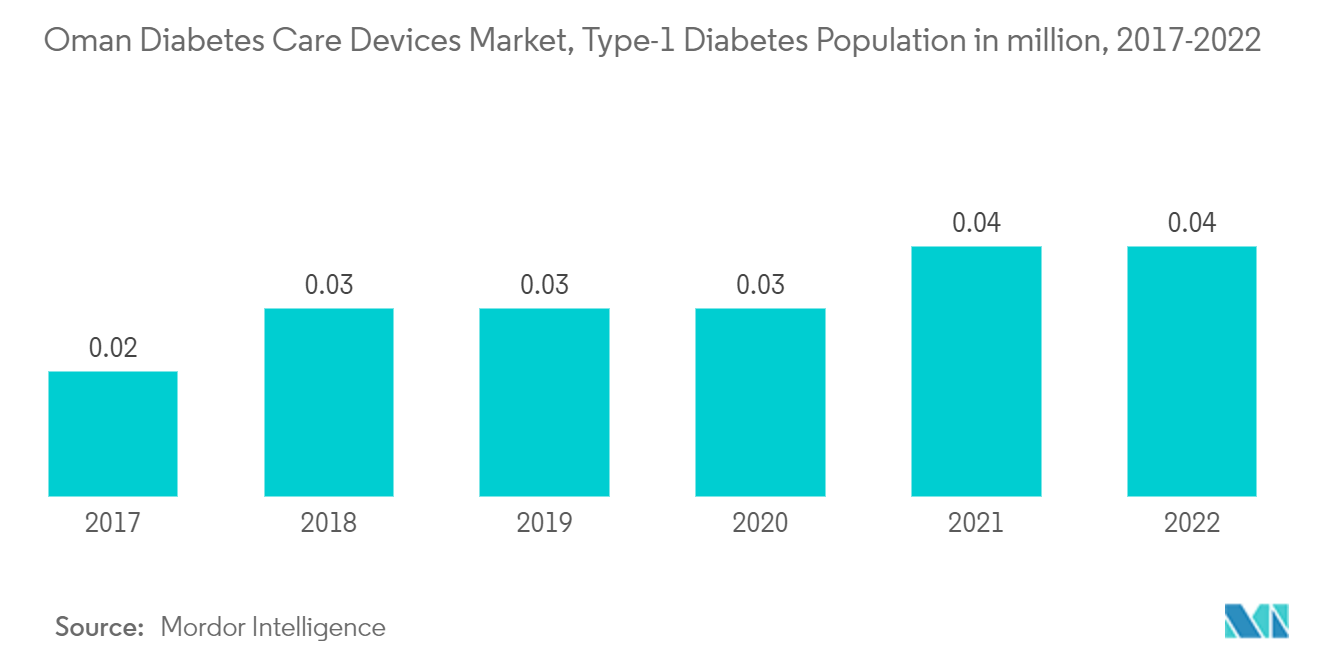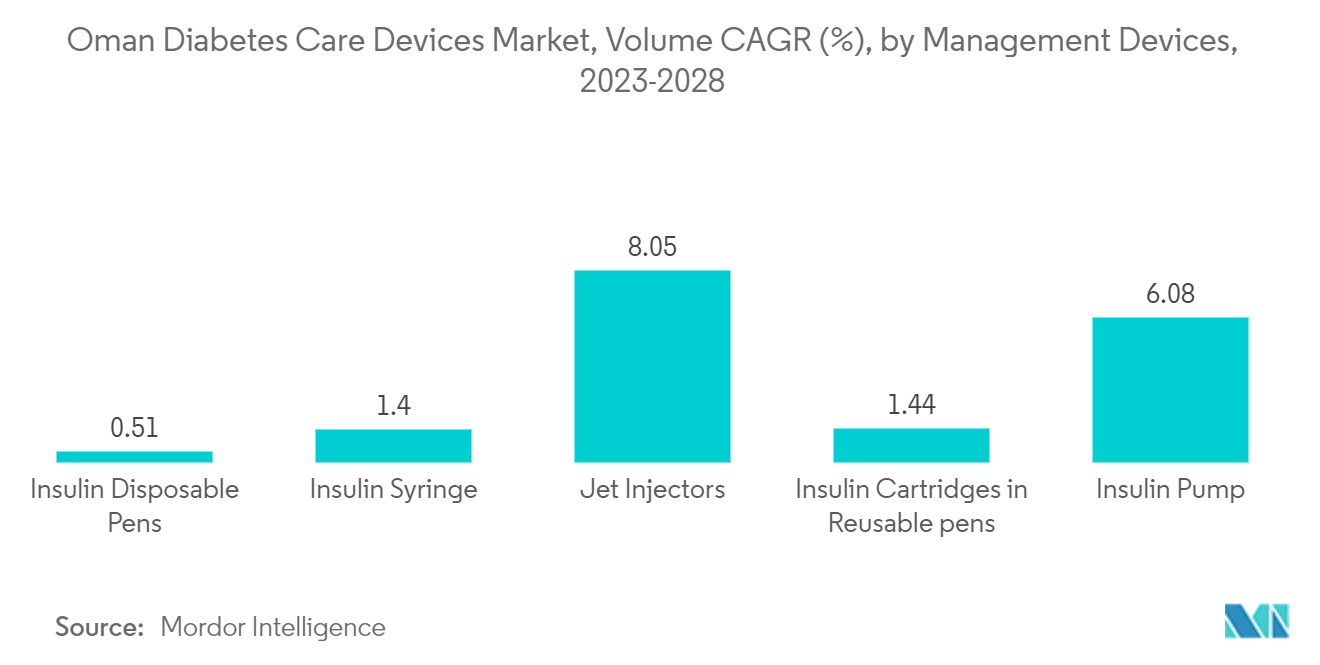Market Trends of Oman Diabetes Care Devices Industry
Continuous glucose monitoring segment is expected to witness highest growth rate over the forecast period
The continuous Glucose Monitoring Segment is expected to witness a CAGR of 9.6% over the forecast period.
A CGM is used by inserting a small sensor into the abdomen or arm with a tiny plastic tube known as a cannula penetrating the top layer of skin. An adhesive patch holds the sensor in place, allowing it to take glucose readings in interstitial fluid throughout the day and night. Generally, the sensors must be replaced every 7 to 14 days. A small, reusable transmitter connected to the sensor allows the system to send real-time readings wirelessly to a monitor device that displays blood glucose data. Some systems have a dedicated monitor, and some display the information via a smartphone app.
Continuous glucose monitoring sensors use glucose oxidase to detect blood sugar levels. Glucose oxidase converts glucose to hydrogen peroxidase, which reacts with the platinum inside the sensor, producing an electrical signal to be communicated to the transmitter. Sensors are the most important part of continuous glucose monitoring devices. Technological advancements to improve the accuracy of the sensors are expected to drive segment growth during the forecast period.
The frequency of monitoring glucose levels depends on the type of diabetes, which varies from patient to patient. Type-1 diabetic patients must check their blood glucose levels regularly, monitor their blood glucose levels, and adjust the insulin dosing accordingly. The current CGM devices show a detailed representation of blood glucose patterns and tendencies compared to a routine check of glucose levels at set intervals. Furthermore, the current continuous glucose monitoring devices can either retrospectively display the trends in blood glucose levels by downloading the data or give a real-time picture of glucose levels through receiver displays.
According to the Oman Diabetes Association, diabetes is a costly chronic illness that needs control of blood sugar levels using medical devices. It imposes a challenge for low-income and social security patients. Thus, an initiative is designed to reduce the burden on these targeted groups, consequently promoting sugar control. Under the ODA initiative, Oman is trying to inform diabetes patients about using blood glucose devices. Moreover, the number of new cases among children is about 60 annually. According to local studies and reports on good diabetes control, the rate in adult patients ranges from 32-35%, whereas it reaches 10-12% among children and adolescents. The Government is working on increasing awareness of diabetes and access to sugar monitors to improve good diabetes control for children.
The studied market is anticipated to grow over the analysis period due to the above factors.

Insulin cartridges in reusable pens hold the highest share in the management devices segment in the current year
Insulin cartridges in reusable pens hold the highest share of about 61.1% in the management devices segment in the current year.
Insulin cartridges in reusable pens are an upgraded version of insulin vials. Most types of insulins are manufactured in the form of cartridges, making them easily accessible. These devices include all the functional benefits of reusable pens and are cost-effective, as these cartridges are less expensive compared to disposable insulin pens in the long run. Due to the increasing demand for insulin cartridges, most insulin device manufacturers produce reusable insulin pens compatible with various manufacturers' cartridges. These insulin cartridges are considered more consumer-friendly, as they are smaller and less noticeable than the classic vial-and-syringe. These devices are also more portable for consumers on the go. Open cartridges do not need to be refrigerated, making storage easy for consumers. Thus, cartridges are the most cost-effective insulin use, as reusable pens are a one-time investment, unlike disposable pens.
The WHO Global Diabetes Compact focuses on reducing obesity and emphasizes improving access to affordable health services and medicines for early diagnosis and treatment of diabetes. The Ministry of Health, Oman, is strategically planning to contain the growing burden of diabetes and invest in all means to control it. They stated, 'Our work needs to ensure equitable and affordable access to treatment, and it is essential that we advocate for investments in diabetes education and prevention programs.' Risk factors such as insufficient physical activity and the consumption of unhealthy diets are contributing to the development and progression of the disease. The Health Minister of Oman, in 2021, stated that 15% of the population in Oman was known to include diabetes, and more than 6500 cases of diabetes are diagnosed yearly in the country's primary healthcare facilities. In addition, 35% of the population is overweight, and 30% are reported to be obese.
Technological development is gaining momentum in the insulin devices market. Over the years, several technological innovations developed that created new devices that are much less cumbersome and more comfortable for patients than traditional ones. Such advantages helped the rise in the adoption of these products in the market.


